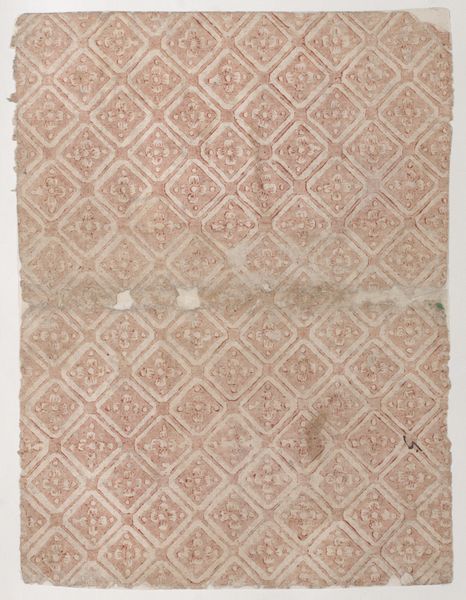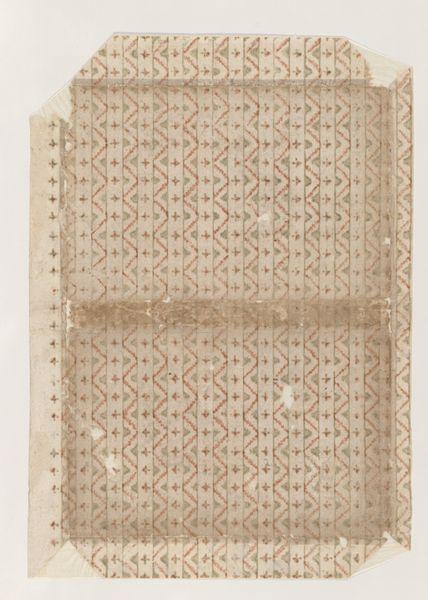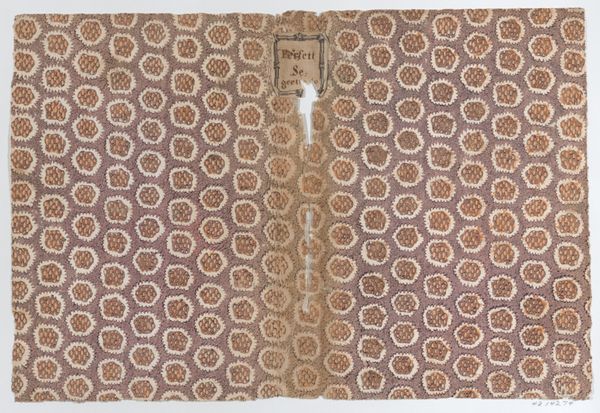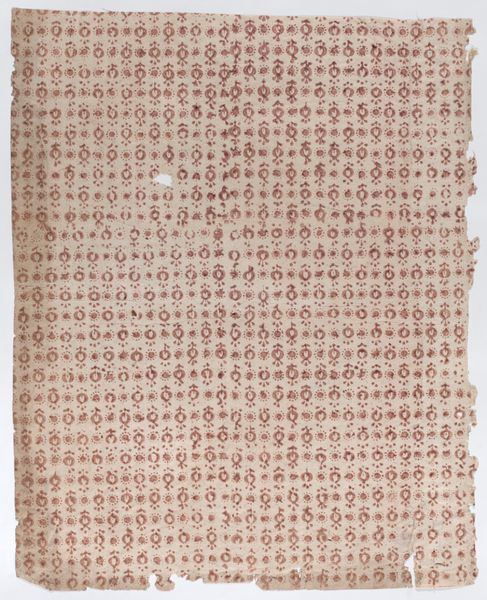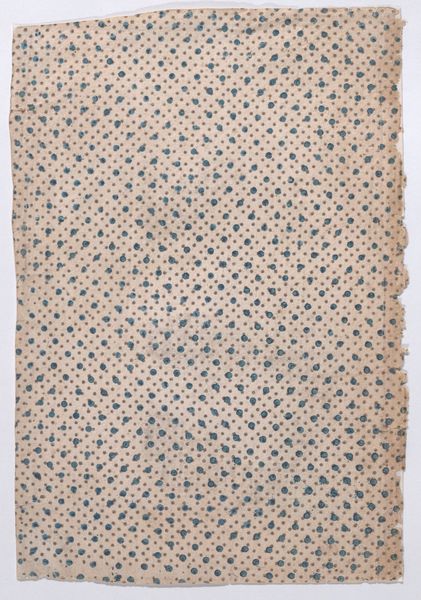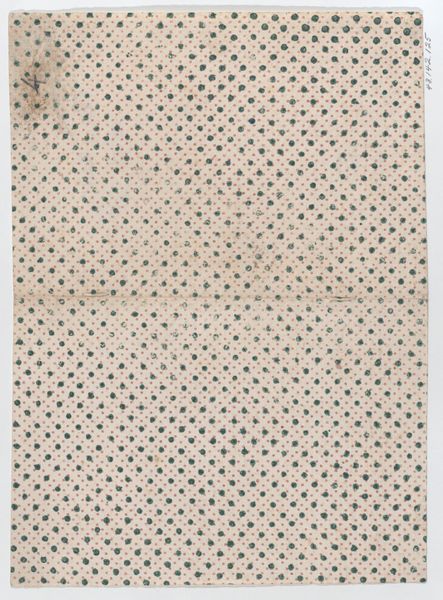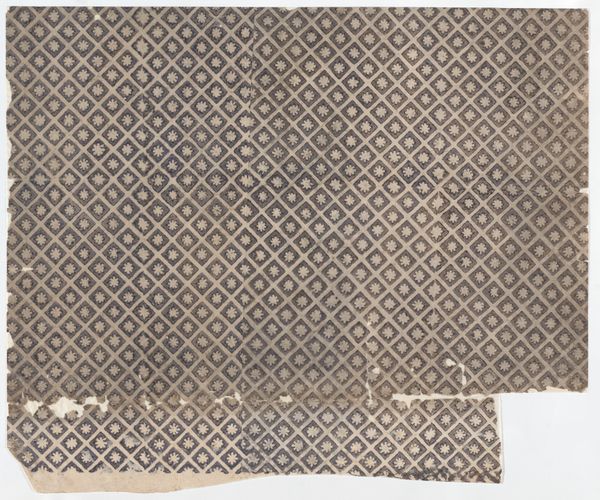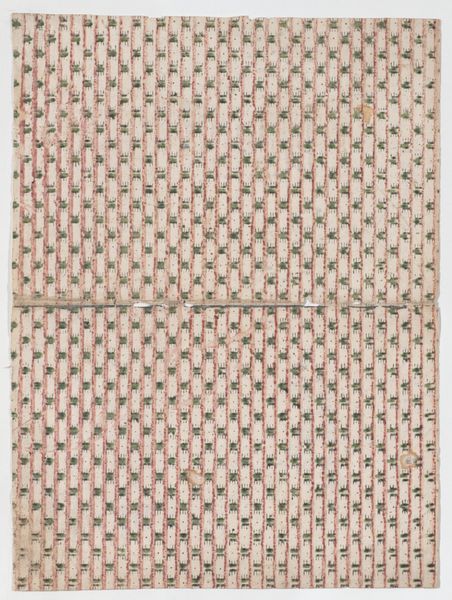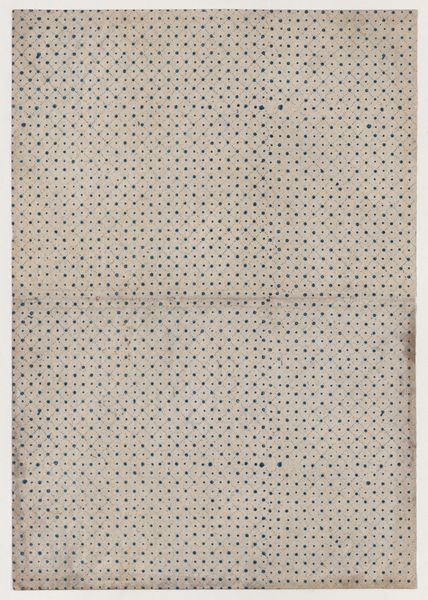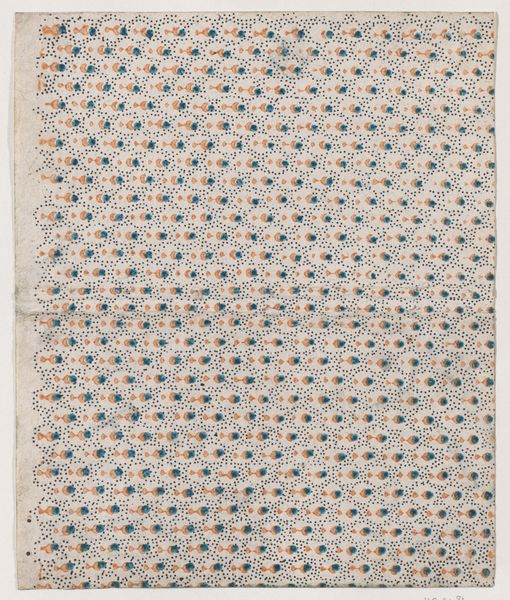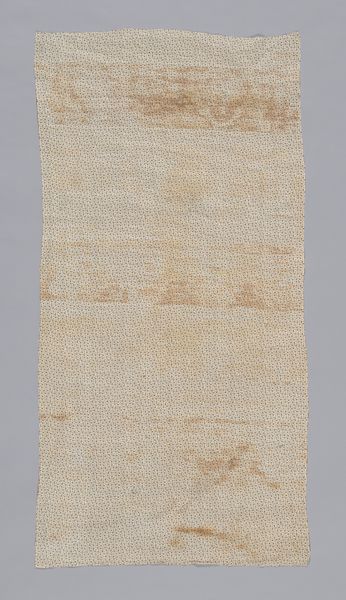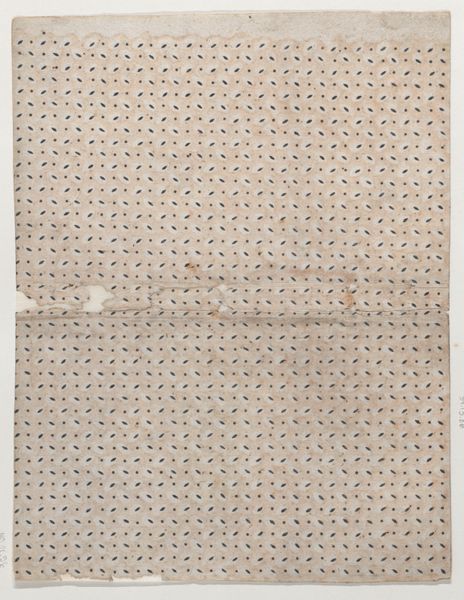
drawing, print, textile
#
drawing
# print
#
textile
#
geometric pattern
#
abstract pattern
#
organic pattern
#
geometric
#
decorative-art
Dimensions: Sheet: 6 7/16 × 9 7/8 in. (16.4 × 25.1 cm)
Copyright: Public Domain
Editor: So this is an anonymous book cover from somewhere between 1800 and 1900, held here at the Met. The artwork involves drawing, print, and textile elements, and strikes me as very… busy. There's so much geometric detail, it feels almost overwhelming. How do you interpret this design in its historical context? Curator: The overwhelming aspect you've noted is interesting. Think about the period: mass production was transforming decorative arts. Geometric patterns, often seen as simpler, became more widespread because they were easier to mechanize. Could this be an early example of that shift, where intricate hand-craftsmanship gives way to reproducible design? Editor: Possibly! The "organic" and "abstract pattern" tags suggest more complexity than just plain geometry, though. Were book covers a space for social or political statements during this era, even if anonymously produced? Curator: Absolutely. Book covers, especially in the 19th century, increasingly reflected the status and aspirations of their owners. Consider the rise of literacy and the expanding middle class. This design, perhaps intentionally or not, mirrors popular wallpaper or fabric patterns, bringing the domestic sphere into the public presentation of the book. What does this convergence of domestic and public space suggest to you about the intended audience or the perceived value of knowledge at the time? Editor: It blurs the lines. Maybe it speaks to making knowledge accessible, more like an everyday object than some sacred, untouchable thing. A democratizing of information? Curator: Precisely. The seemingly simple act of designing a book cover can reflect broader shifts in society's relationship to knowledge, class, and cultural values. It reveals the politics inherent in even the most quotidian objects. Editor: Wow, I'll definitely look at decorative art differently now. It's not just about pretty patterns! Curator: Exactly. Every visual choice has implications, reflecting the complex interplay of cultural forces shaping the art – and the observer!
Comments
No comments
Be the first to comment and join the conversation on the ultimate creative platform.
